TRACING THE PATH PODCAST
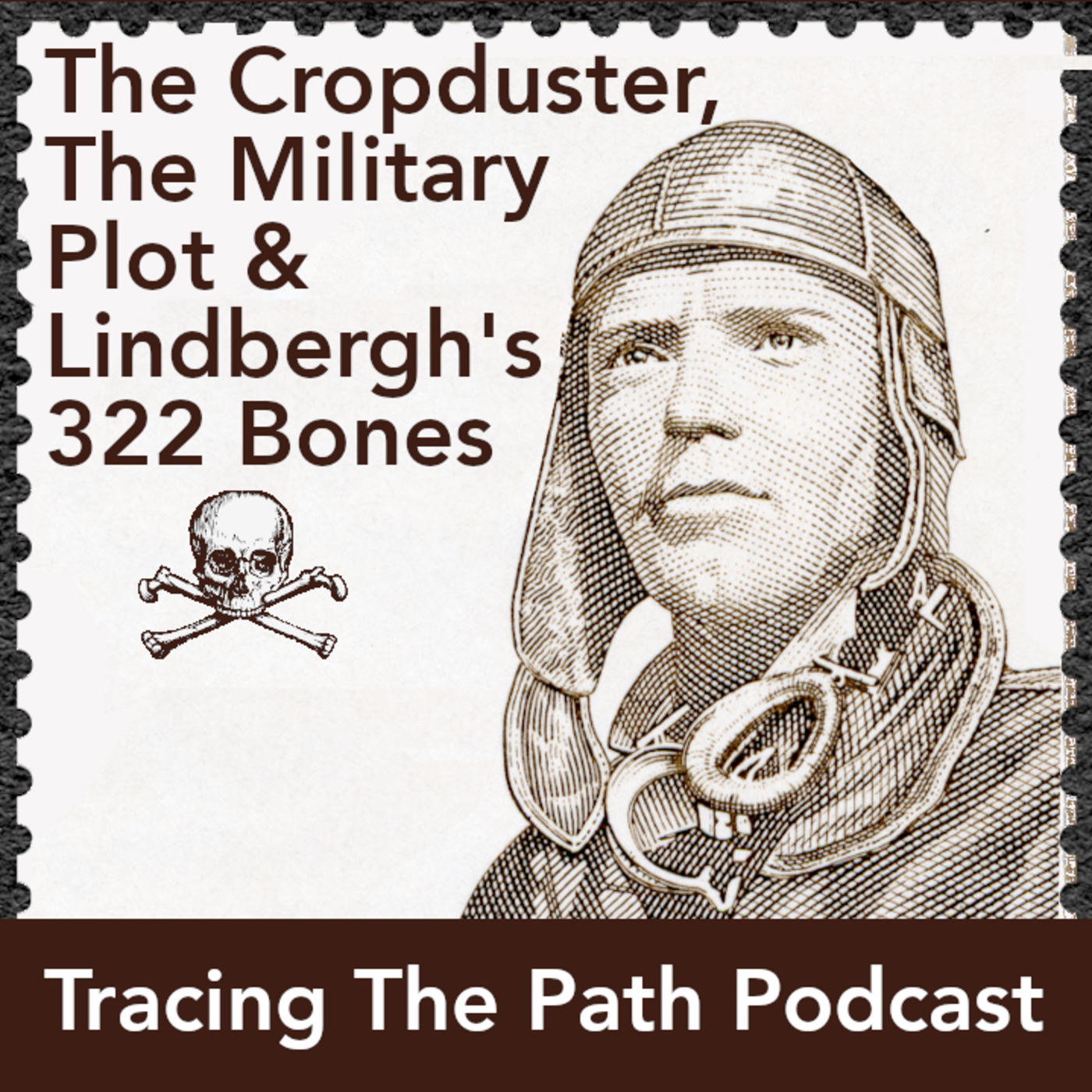
The Cropduster, The Military Plot & Lindbergh’s 322 Bones
This episode traces the unexpected and interwoven origins of two major American airlines, Pan Am and Delta Air Lines, highlighting the pivotal roles played by both. It begins by detailing how the boll weevil crisis in the American South spurred innovation in crop dusting, leading to the formation of the world’s first crop-dusting company, the precursor to Delta.
Concurrently, the story introduces Juan Trippe, whose ambition to establish commercial air service, driven by the lucrative airmail contracts and a strategic rivalry with Major HAP Arnold, led to the creation of Pan American Airways.
The story then focuses on Charles Lindbergh’s historic transatlantic flight, a feat sparked by a prize and made possible by sheer determination, which profoundly influenced public perception of aviation and created a boom in the industry, ultimately drawing the attention of existing companies like the one that would become Delta.

Audio Hour:
If you run an activity group, classroom or “audio book club”, click here for more information on using Tracing The Path.
Throughout the episodes, every tune is somehow related to the topic. In the Twinkies episode, for instance, the discussion of the Brooklyn Tip-Tops Baseball team concludes with “Take Me Out To the Ballgame”.
How many do you recognize? And harder, how many can you name?
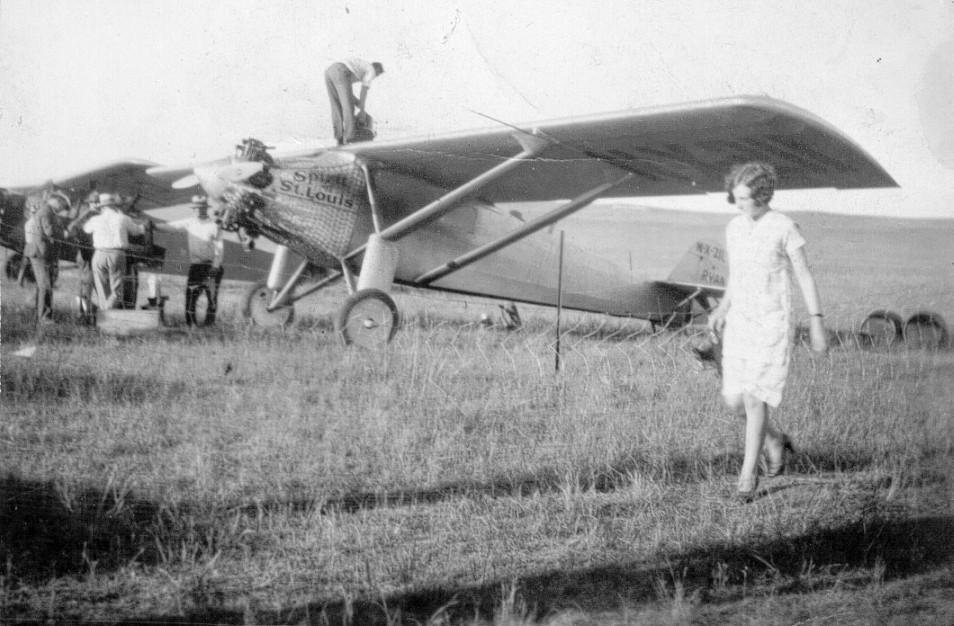
Peanuts and Boll Weevils
Our story begins with a different kind of beetle. The Boll Weevil is a Central American beetle that lives, grows, eats and breathes the cotton plant. Around 1892, the Boll Weevil migrated from Central Mexico across the Rio Grande into Texas, where it rapidly spread across the southern United States.
Sadly for American farmers, the Boll Weevil decimated cotton crops, causing a national crisis. Not only was the boll weevil bad for crops, but it was also making an existing problem even worse. Poor working conditions, utter mistreatment, and an increasing number of manufacturing jobs in the north, had already created a great migration of the labor force.
And the search was on for a way to eradicate this new infestation.
At the Tuskegee Institute in Alabama, a young George Washington Carver had long been preaching crop rotation as a way to minimize risks and keep the soil full of nutrients. And now in the face of cotton destruction, he began pushing farmers to start growing peanuts.
While many of the farmers in Texas switched to peanuts, one town in Alabama, Enterprise, took his advice and completely flipped from a cotton-producing town to a peanut-producing community. And while towns all around them were facing economic hardship, Enterprise was thriving.
In fact, they credit the boll weevil for making them adapt, overcome and become a successful community. They even built a statue of a boll weevil in the middle of town honoring it.
But peanuts weren’t the only solution.
Dr. B.R. Coad, a United States Department of Agricultural Entomologist, in Tallulah, Louisiana, was testing the compound calcium arsenate as a potential pesticide. Early trials were proving some success, but they needed a better way to deliver it to the plants. Coad had a friend at Louisiana State University who could fly a plane.
His name was CE Woolman. Together, they arranged to borrow a plane from the army to see if they could spread the compound by air. George Post, a representative from Huff & Daland Airplane Manufacturing, came to see the dusting experiment. He thought the idea was so good, he contacted his management about potentially designing planes for the sole purpose of crop dusting.
And in 1925 they did exactly that.
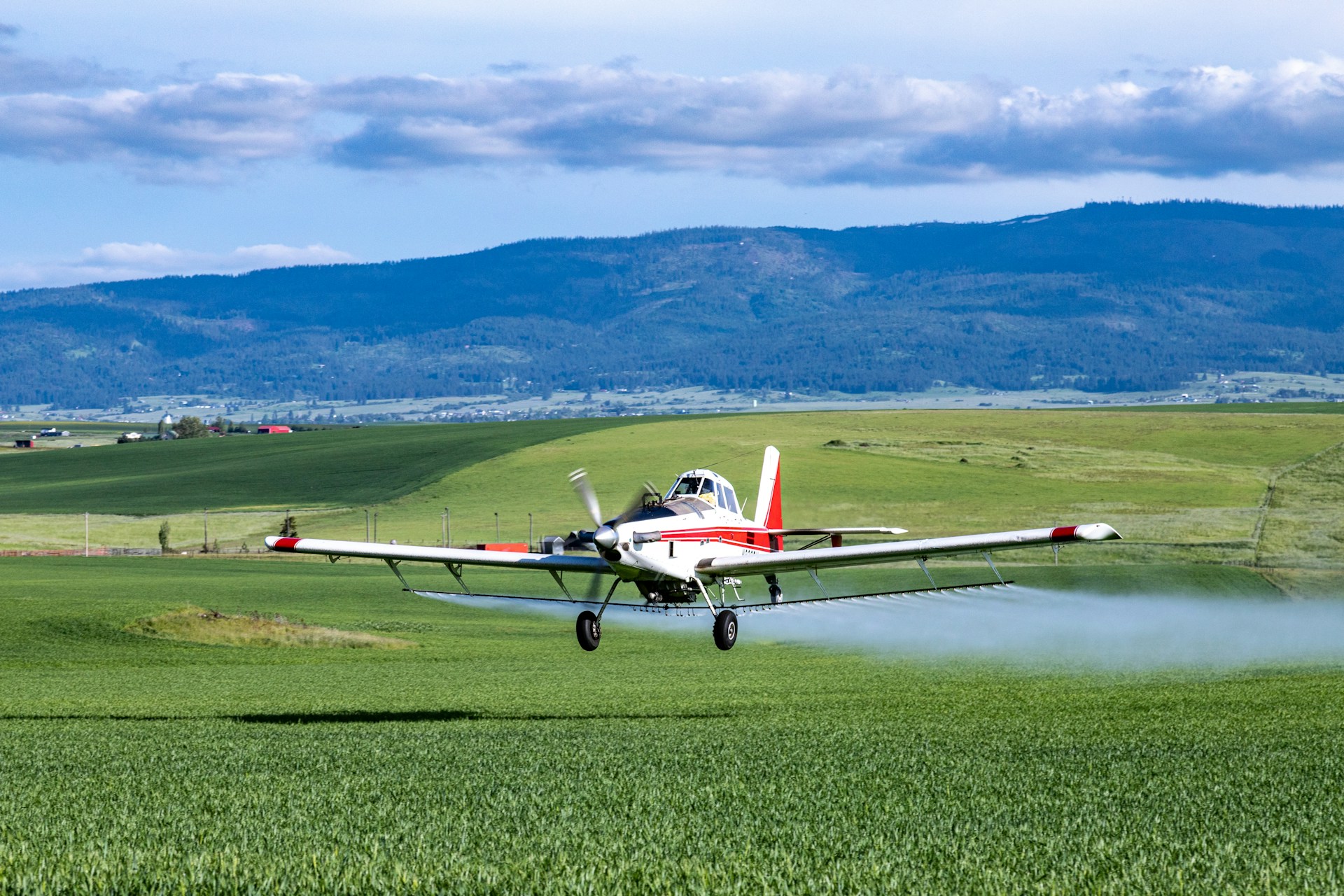
Thomas Huff and Elliot Daland, were MIT graduates who had boat building experience, and felt they could turn that into the construction of hydroplanes. On the team as designer was fellow MIT graduate James McConnell.
James was excited about the challenge of designing a crop-dusting plane.
Thomas and Elliott put George Post in charge of their newest division, Huff & Daland Dusters, the world’s first crop-dusting company. And CE Woolman left his job at LSU to be the Huff and Daland entymologist.
Their first plane, they called “The Puffer”.
And with the demand for crop-dusting and the rise Huff and Daland was soon the largest private fleet of planes in the world.
That brings us to the second hero of our story.
Born in 1899 in Sea Bright, New Jersey, Juan Trippe grew up with a privileged childhood. While his father was a successful Wall Street banker, it was his great-great-grandfather who was the star of the lineage. The great Lieutenant Trippe, was captain of the USS Vixen during the Barbary Wars.
When Trippe was ten years old, his family attended the 300th anniversary of Henry Hudson’s discovery of the river that carried his name. One of the attractions at that celebration was navigation of the river by air.
The aviation star was Wilbur Wright. He took off from Governor’s Island, a military base across from Battery Park in New York City. And at 10:18 a.m., he took off over Bedlow Island and the Statue of Liberty.
He flew over the Lusitania, which was packed with passengers en route to England. Juan and his father watched in awe from Battery Park, and his father got him a wooden model airplane with three foot wings that was powered by elastic bands.
Action and adventure were in his blood and at 17 years old Juan took private flying lessons at Curtis Flying School in Miami and then went on to Yale and then on to the Navy during World War I. In his junior year at Yale, he was tapped, as they say, for the secret Skull and Bone Society, a group that has been tied to many famous celebrities and politicians.
While the membership of Skull and Bones is not secret, what goes on inside remains a mystery. In fact, both John Kerry and George Bush were members. And when asked, “Always answered, it’s so secret,” we can’t say. Trippe also started a Yale Flying Club while he was there. It was in these two groups, Juan Trippe, would form his most valuable relationships, like the one he made with Cornelius Vanderbilt Whitney.
Trippe bought a war surplus sea plane for $200 and commuted from Yale to their East Hampton home on runways he actually built. His goal after graduation was to make an aircraft travel business at a time when America had no international or domestic service or infrastructure.
The Rise of Pan Am
Juan formed Long Island Airways in 1923. He was the president, the pilot, and the mechanic, flying wealthy couples up to the Hamptons, or up the Hudson River, or even to Lake Placid. In the first two years, the company made $40,000.
When Juan heard that United Fruit needed to make a three-day journey to Honduras to finalize paperwork, he used his connections to get a meeting with their executives, and convinced them he could fly the paperwork in just a few hours. It was then that he realized commercial success in aircraft would depend on getting U.S. Post Office airmail contracts.
His company was only worth about $5,000, not nearly enough to secure government contracts. So he closed it, and contacted his super wealthy college friend Cornelius Vanderbilt Whitney.
When the Kelly Act passed in 1925, allowing private companies to bid for mail contracts, Trippe went into action.
The first Airmail route was the lucrative Boston to New York. He convinced his three college friends to each put $25,000 into his Eastern Airlines Company. Getting a wind that someone at the post office felt 26-year-old trip to be too young for such a large contract, he contacted his rival company, Colonial Air, and convinced them to merge with him.
The merged company, Colonial Air Transport, then won the big contract.
The next bid they could win was the New York to Miami. They knew that winning that contract would open the possibility of Cuba and Central America. Meanwhile someone else was having similar thoughts.
Major HAP Arnold, who had been at the Hudson River celebration that day, had another idea brewing. HAP was personally trained by the Wright brothers as one of the first two military pilots and was the first pilot to fly airmail.
Since then he had spent time in the Philippines mapping Luzon Island and in Panama scouting locations for military landing sites. His entire world revolved around preventing nefarious foreign interests from making inroads in the Western Hemisphere, specifically near the Panama Canal.
He was aware and wary that Germany’s SCA-DTA airline was lobbying heavily for handling rights in South American countries. They had already won Columbia. But when he saw SCA DTA had hired a Delaware firm to help win U.S. mail contracts, he had to act.
He knew of Juan Trippe and his business ventures. And he reached out to see where Juan was on his South American goals. It was when they discussed Key West, that he found it to be on Trippe’s radar.
He knew that Juan was preparing for the impending Key West to Cuba mail contract, and got the gist he had something small in mind. But he also knew Juan was extremely competitive. So Major Hap and two of his peers decided to create a shell company airline to bid for the mail contract.
Hap wanted a commercial airline to not only deliver to Cuba, but all of South America. So, he named the shell company “PAN American Airways”.
After seeing the new competition, Trippe responded in full by raising $500,000 in capital through investors and by purchasing a seaplane company that already had service between Key West and Cuba.
Trippe rose to the occasion and his dream of a large commercial airline taking the mail contract would be secure. So he called Trippe and asked if he wanted to merge companies. Together, the merged, now known as Pan-American Airways, won the mail contract between Key West and Cuba, with Juan stepping up to lead the organization.
Pan-American Airways would be the first international airline in the US, and for Hap Arnold, the first line of defense against foreign encroachment.
That brings us to the next hero of our story.
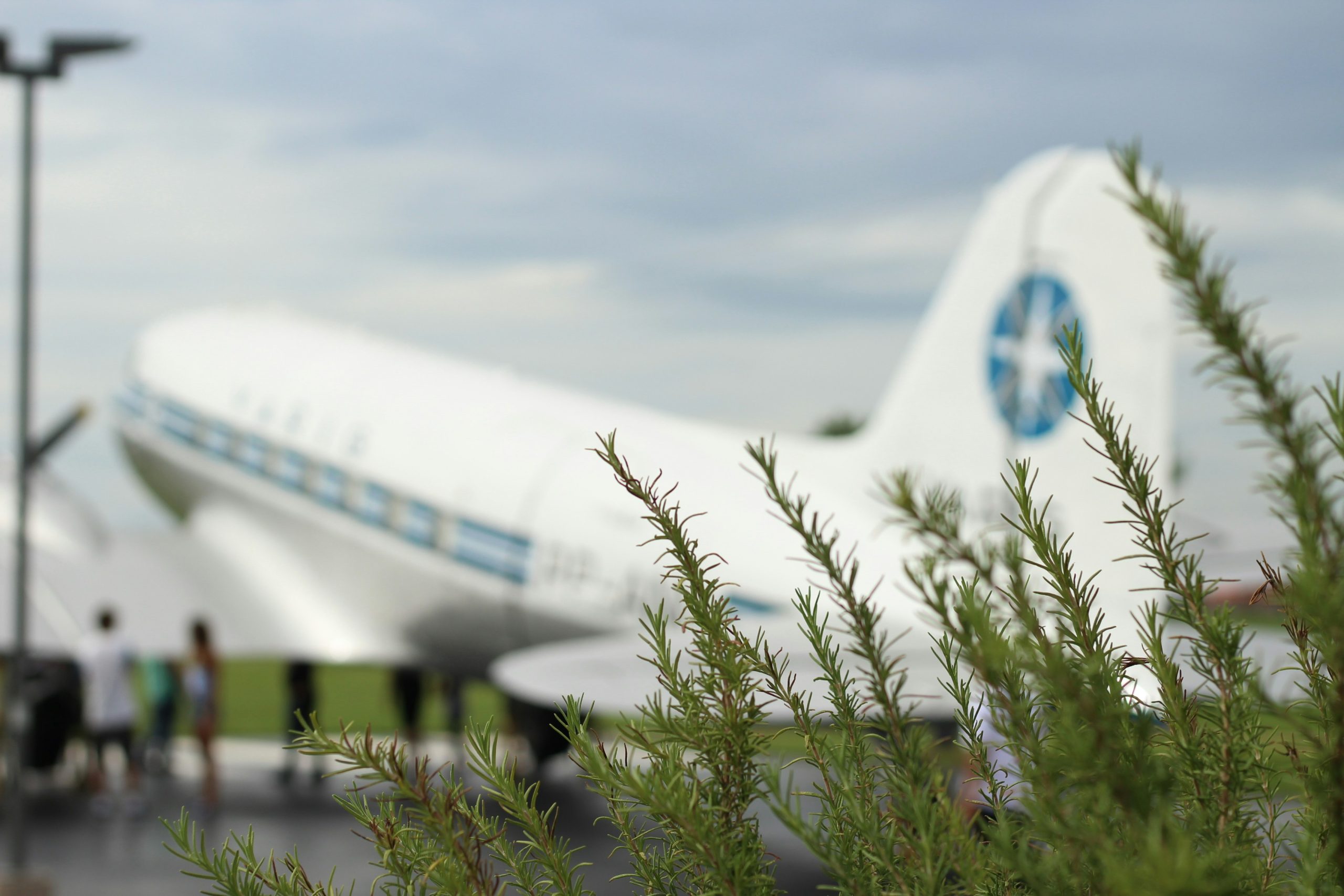
The Notorious Lindbergh
On May 12, 1808, Oobillǎ Monsun was born in Smeedstorp TooMelelǎ Skōen Sweden. He was born into a peasant family with a small farm and tailorshop. Through his marriage which brought in a large dowry and his hard work, he became a well to do farmer and was elected to the Swedish version of Parliament, representing farmers.
Until the 1850s, Sweden traditionally used a patronamic naming system. That meant you were giving a unique first name at birth, and then your last name was your father’s first name plus the suffix “son” or “dotter”.
If you look at Oobillǎ Monsun‘s name in English, it looks like Ola Manson, which would mean Ola was the son of his father, man. Ola’s sister Sven was named Sven Mansdotter, which meant Sven was the daughter of Man.
In the mid-1800s, Sweden wanted to modernize the system, giving families a chance to choose a last name.
Oobillǎ, being in politics, also wanted a recognizable unique name for his family. Together, they decided to choose a name based on nature, their number one love, and chose to merge the Swedish words for “tree” which was “lind”, and “mountain” which was “berg”, “Lindbergh.
And Obla took the opportunity to create a new first name as well, which meant he ended up as August, Lindbergh.
Politics is a rough game, where any problem or indiscretion can be used against you. When such a thing occurred for August, he felt it best that he leave. So in 1895, he left the family business and family farm to his wife and seven kids and moved to America with his mistress.
They settled in Minnesota and later had one son, Charles Augustus.
Charles grew up smart studying law at the University of Michigan and then served five terms in the U.S. House of Representatives.
In 1876 he married, and in 1902 they gave birth to their only son, Charles Lindberg.
Charles’s dad’s political life meant he would end up at ten different schools, Detroit, Minnesota, D.C. and California amongst them. And even though his mother was a schoolteacher, Charles was more mechanical than academic.
At fourteen, his father had ordered a tractor by mail, which Charles Lindbergh had assembled and operated on his own.
And when he was 16, he came across a defunct motorcycle that he not only fixed, but improved to be faster. Because he was from a farming family, he didn’t have to take exams, which meant he automatically qualified for college.
After high school, he pursued mechanical engineering at the University of Wisconsin. But when he failed a few of his first classes, he left, and headed to flight training school in Nebraska. There he met Bud Gurney, a man who had become a lifetime friend. They’d both take their first fight together, sharing a seat behind the pilot.
Because he didn’t have enough money to post a bond, solo flying wasn’t going to be permitted. So to earn money to continue taking lessons, he and Bud volunteered as stuntmen in a barn storming tour across the country, walking on the wings of planes in flight.
But when he’d saved enough money, Lindberg traveled to Southern Field in Georgia, where he had heard they had surplus army planes. When he got there, he sold his Excelsior Motorbike and added some of his own money to buy his first airplane.
$500 for a Curtis JN-4 Jenny. He practiced in that field to get five hours of flight time and then flew all the way to St. Louis. joined the barn storming circuit doing tricks and offering $5 rides as Daredevil Lindbergh.
In 1924 Lindbergh decided to stop barn storming and to do something meaningful. He went to Brooksfield’s in San Antonio and started a year of military flight training with the United States Air Service.
Of the 104 cadets that started, only 18 finished, and Lindbergh finished first.
Unfortunately, the army didn’t need active duty pilots at the time, so Lindbergh returned to barnstorming until a real job became available.
Airmail.
In 1925, the Robertson Aircraft Corporation in St. Louis hired him to first lay out and then serve as chief pilot for the new airmail contract they had won between Chicago and St. Louis, with stops in Springfield and Peoria, Illinois. Lindberg hired his friend Bud Gurney to fly along with two other guys.
And then on April 13th, 1926, they executed the post office oath and began flying. As routes went, Lindberg was lucky. The Chicago to St. Louis trip flew right over Route 66, making daylight trips very easy, just follow the road.
In fact, Lindbergh started flying 10 days before Route 66 from Chicago to LA was officially complete. The mail gig would give Lindbergh thousands of hours of day and night flying time, and on two occasions he had to actually eject from the plane, landing via parachute. Lindbergh didn’t find anything aerial to be scary.
The second crash occurred in La Salle, Illinois, not far from Chicago. After getting to Chicago, he had to wait a couple of days for a replacement plane. And in so doing, went to the movies to see “What Price Glory”, by Maxwell Anderson, who’d written the screenplay for “All Quiet on the Western Front”.
This moment would change the trajectory of the world forever. Lindbergh going to the movies was the match that lit the bonfire was started as a challenge. Perhaps more than any other single force, the advent of challenges have moved the world forward, like no other.
- It was the British longitude prize of 1714 that John Harrison faithfully pursued the lead to the chronometer, a method for ship captains to rely on when determining their location at sea.
- It was the UK’s daily mail prize that incentivized Lewis Bleriot to fly across the English Channel.
- It was the 10 million dollar and sorry X-prize that spurred private industry into making space travel commercially viable.
- And it was the DARPA unmanned vehicle challenge that will produce safe vehicles that can travel great distances without human interaction.
In this story, it would be a 1919 challenge that changed the world.
The Spirit of St. Louis
His name was Augustus Post, and he was all about cars and aviation. He participated in the Gordon Bennett Balloon Races in Germany, five different years, once even crashing down for 475 feet without getting hurt.
He also was the 13th-man to fly a plane, and was the founder of the Aeroclub of America, and the official timer of Orville Wright’s 57-minute flight in Virginia. Not only that, but as a car enthusiast, he founded the New York to St. Louis’ Glidden Cup Race and started the American Automobile Association, AAA.
Augustus also designed the first airmail route from D.C. to New York that Henry Hap Arnold flew, and in the process, Augustus coined the term “airport.” In 1914, just before the war, he wrote an essay entitled “Columbus of the Air,” proposing that soon Europe would only be two days away, not five, as someone would make the flight.
But the war would not only create the advancements necessary to do so, but it would also stall the dream for five years. After the war and still fired up about the idea of flying from New York to Paris, he wanted to offer a prize to the first person to make it across.
To make that happen, he reached out to a millionaire hotelier in New York, Raymond Orteig. And Orteig agreed. He would put up $25,000 for the feat.
Sadly, the deadline they put on it of 1924 came and went. put on it of 1924 came and went. And the challenge was extended for five more years. In 1926, nine teams attempted the challenge, but none made it.
In 1927, news of the prize in the impending deadline made the newsreel, people all over the country who hadn’t previously known about it, finally heard.
One of those people was Charles Lindbergh, sitting in the theater about to watch What Price Glory, when the story was part of the pre-movie Newsreel.
He immediately wanted to do it. All the hours delivering mail, he knew if anyone could do it, it would be him.
Lindbergh needed a plane, however. The Robertson’s de Havilland planes didn’t have what it would take, but the Robertson’s were supporters and gave him a little money to help.
He then joined the Keystone Masonic Lodge in St. Louis and two members stepped up with $15,000 as long as he named the plane The Spirit of St. Louis.
With that he sent telegrams to six airplane manufacturers with a simple message:
“Can you construct a whirlwind engine plane capable of flying from New York to Paris? If so, please state cost and delivery date.”
Wright aviation – No.
Fokker aviation – No.
Travel Air of Wichita – No.
Alexander Aviation – No.
Columbia Aircraft – No.
RyanAir of San Diego -Yes. $10,580 dollars. Three months.
Lindbergh was overjoyed and headed to San Diego immediately, where he and Don Hall, their engineer, hit off like best pals. Don was just as passionate as Lindbergh.
The two went to the library together because they had no idea where to start. Figuring out how far it was seemed like the first step. So they put a string on a globe and calculated it to be about a forty hour flight if he went north. But north meant frigid water and no shipping lanes from which he might be rescued.
Lindbergh thought it perfect.
The plane would need to be low and weight, high in endurance, single pilot, be able to carry 400 gallons of fuel, be designed so the pilot sat behind the fuel tank, have periscope viewing and extra wingspan.
Don Hall thought it might be best to start from scratch rather than modifying and existing. He included state-of-the-art instruments, earth inductor compass, rugged airframe, a 200-horse power engine, and a wicker chair. The plane was done in two months.
Lindbergh’s maiden flight was successful, and zippier than he expected. So during the next 10 days, he flew it for 28 hours to learn its idiosyncrasies.
On Friday, May 20th, 1927, he was in New York, ready to go before someone could beat him.
In the pre-dawn Hours, Roosevelt Field was chilly, and a drizzle made the airfield muddy. Juan Trippe, who was there, estimated 500 spectators had come to see history or disaster in the making. On hand to record the event was a Fox Film Corporation equipped with a new sound on film process called MovieTone.
The pilot’s plane covered in tarpaulin and secured to the back of a motor truck, arrived with a police escort. The muddy runway had deep ruts requiring boards set across so the spirit of St. Louis could be safely pulled to its starting point at the field’s western edge.
The slow march in darkness and drizzle conjured an image that would have been a premonition of doom to anyone but Charles Lindbergh. Trippe wandered if Lindbergh would even make it off the field.
There was a gully in the middle, telephone wires at the end of the 5,000 foot runway, a muddy field, and the air was heavy. Lindbergh turned to his crew and with his boyish grin said, “What do you say? Let’s try it.”
With 500 spectators holding their breath, Lindbergh strapped himself in, pulled down his goggles. At 7.51 am, he throttled the plane forward. It bounced on the runway twice, for for finally, lifting into the skies.
After eleven hours in the cockpit, flying at a hundred miles per hour, Lindbergh passed over Newfoundland at dusk, where he buzzed the fishing town. The last humans he would see for two thousand miles.
Meanwhile at Yankee Stadium, the announcer for a heavyweight boxing match between Jack Sharkey and Tom Maloney asked the crowd for a moment of silence to think about a boy up there tonight who is carrying the hopes of all Americans.
And in the paper the next morning, humorous Will Rogers wrote, “No jokes today, an odd tall, slim, smiling, bashful boy is somewhere out there over the middle of the ocean, but this kid ain’t gonna fail. Lindbergh wasn’t seen again until his plane was spotted over the beaches of Normandy. France ordered that torches be lit from Deauville to Paris, lighting the way.
150,000 people had gathered to see him land. They lifted him out of the plane and carried them above their heads, before police and soldiers whisked him away to dinner and a good night’s sleep. Even though Charles wasn’t the first to cross the Atlantic by plane, his trip and the prize transfixed the world.
The Rise of Delta Airlines
Everyone wanted to be like Charles Lindbergh. Restaurant dishes and streets were named after him. A hat called the Lucky Lindy became the fashion craze. A cartoon strip based on him called Scorchy myth became the number one comic. And even Disney debuted a movie short called “Plane Crazy” that introduced a new character, Mickey Mouse.
The U.S. Post Office issued a new postage stamp, and San Diego, the place where the plane was built, renamed the airport, Lindbergh Field.
The number of airline passengers grew 30 times.
The number of pilots tripled, the number of planes quadrupled.
But despite capturing the world’s attention, Time Magazine was caught off guard and didn’t put Charles Lindbergh on that week’s cover, or the following weeks. Embarrassed, they created a new series at the end of 1927, called “Man of the Year,” to which Charles Lindbergh was the first.
Barely two months after he had arrived in Paris, GP Putnam published his 318-page biography, which was translated into many languages and sold more than 650,000 copies in the first year alone.
An aviation enthusiast Harry Guggenheim financed a nationwide tour where Lindbergh visited 82 cities in 48 states, delivering 147 speeches and was seen by 30 million Americans. ‘
A young Paul Harvey was in the crowd when Lindbergh touched down in Tulsa, Oklahoma. And within a year in Tulsa, the city had built an airport and had won a stop on the Ford Reliability Barnstarming Tour, and within three years was the nation’s busiest airport.
Despite manufacturing plane engines and airplanes for the government, it wasn’t until Lindberg stopped in Detroit that Henry Ford ever got on an airplane. One of Lindbergh’s stops was Candler Field outside of Atlanta.
Lindbergh was quickly swept off toward downtown Atlanta, where droves of people came out to see him. All along the parade route, five and ten people deep, all the way to Georgia Tech Stadium, where he was slated to speak.
First there was the horse, then the horse was carriage, and now this lone eagle, who single-handedly shrank the world stood in front of them. Harry Guggenheim took note of this gala celebration and approached Georgia Tech with an offer to fund an aviation program.
The city jumped on board very quickly and decided to fund lighting of its runway in Hapeville in order to attract the lucrative airmail service. And it worked. The lighting and the funding from Guggenheim helped Atlanta beat out Birmingham, Alabama for the prize.
Which brings us back to CE Woolman and his crop-dusting business, Huff-Dayland-Dusters. CE was now in charge of a large fleet of planes, but they saw a significant decline in business after the summer growing season.
So he decided to shift operations to Peru, where their growing season was the opposite months. He was in Peru that he attempted passenger service after successfully securing air traffic rights over all of the competitors.
Juan Trippe had actually purchased the Peruvian Airways Corporation and worked with CE Woolman to service the country through Woolman’s Air Rights contract and his passenger planes.
But the following year, Woolman had enough of the revolutionary activities and complications and sold his Peruvian rights to Trippe and headed home to Monroe, Louisiana.
Woolman found some Monroe businessmen interested in buying the crop dusting assets from Huff-Daland and they were going through transitions of their own and agreed.
Woolman and his investors named the new company after the Mississippi Delta, Delta Air Services. After seeing the improvements made to the Atlanta airport, after Lindbergh’s historic visit, they moved their headquarters to Atlanta, where Delta remains today.
At the end of the Goodwill tour, Dwight Morrow, the ambassador to Mexico, asked Lindbergh if would consider a Goodwill tour of Central and South America. In the same way it was important to have Arnold securing landing rights and sure enough partnerships in South America. It was important to Morrow as well.
And Pan Am was seen as the government’s tool in their fight.
On December 13, 1927, Lindbergh flew 27 hours to Mexico City and actually caused a small panic being two hours longer than they expected. He had lost his way a bit, trying to read train station signs by flying low and comparing the names with his map.
He kept seeing Caballeros, a mistake he wouldn’t understand until later. 150,000 people greeted him in Mexico City, including the President of Mexico, Dwight Morrow, and Will Rogers, who happened to be filming there.
Mexico City would actually change Lindbergh’s life, as it is where he met Dwight Morrow’s daughter and his future wife and co-pilot.
The cunning businessman Juan Trippe escorted Linbergh to a variety of other countries, where he used Linbergh as a goodwill tool to secure more landing rights, all backed by the monies and the power of the United States government and military.
CUTTING ROOM FLOOR
To hear all the stories that hit the cutting room floor, you have to listen to the episode.
ABOUT THE SHOW
Let us tell you the story of the 20th Century, by tracing each event back to the original decisions that shaped it. You’ll quickly find out that everybody and everything is connected. If you thought you understood the 20th Century, you’re in for a treat.
Tracing the Path is inspired by storytellers like Paul Harvey, Charles Kuralt, and Andy Rooney.
INTERCONNECTED EPISODES
 |
The America of Tarzan and Buck vs Bell When Tarzan and the Supreme Court defined the popular culture |
 |
Bob’s Swedish Candy Canes Candy Canes are Swedish . . . with an American twist |
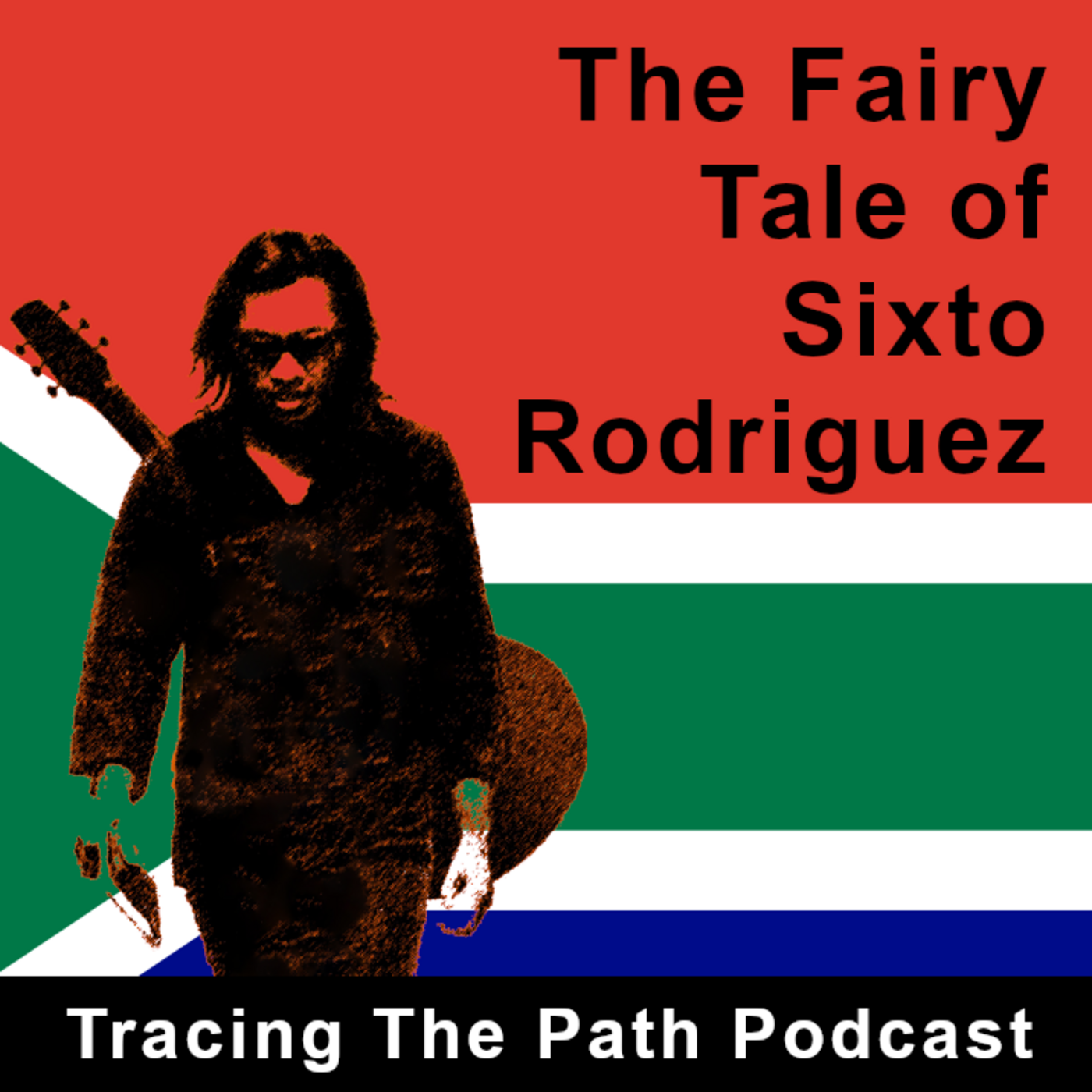 |
The Fairy Tale of Sixto Rodriguez Ever hear the story of the most famous musician in the world? Neither did he. |
 |
The Hands that Changed the World Have you ever heard the origin story behind Rolex |
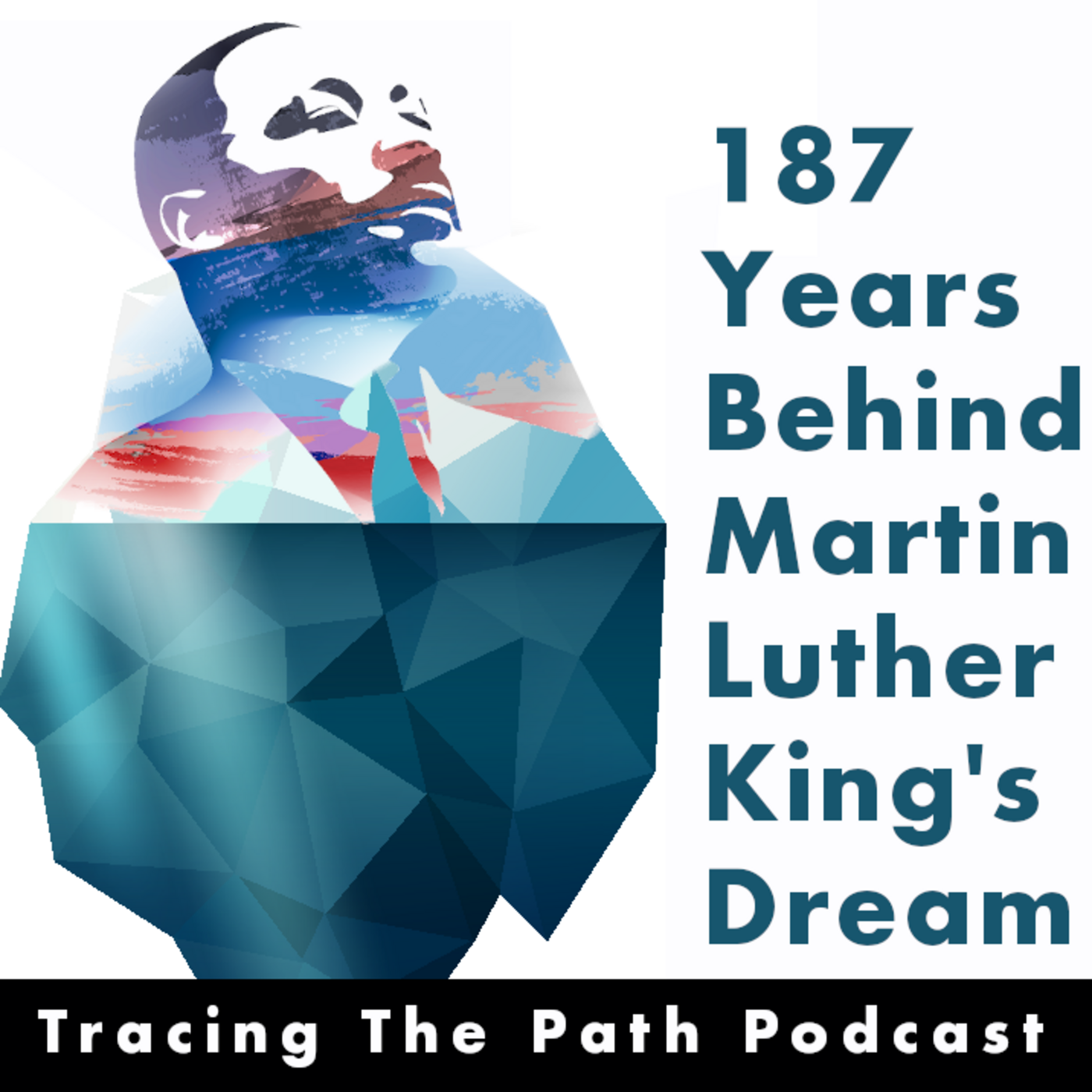 |
187 Years Behind Martin Luther King’s Dream We all learn about the “I Have a Dream” speech, but few know where it comes from. |
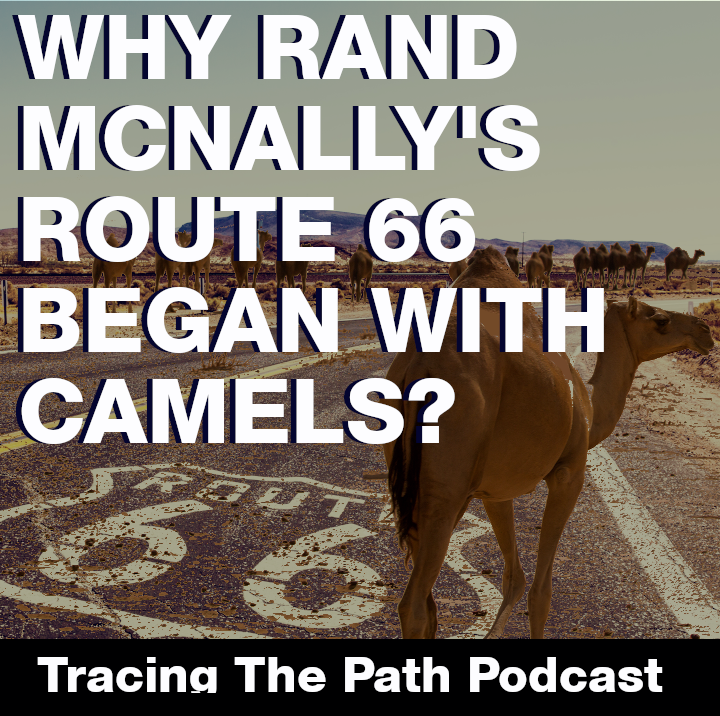 |
Why Rand McNally’s Route 66 Started with Camels You’ve heard the story about Roman Wagon Ruts, right? That’s not this. |
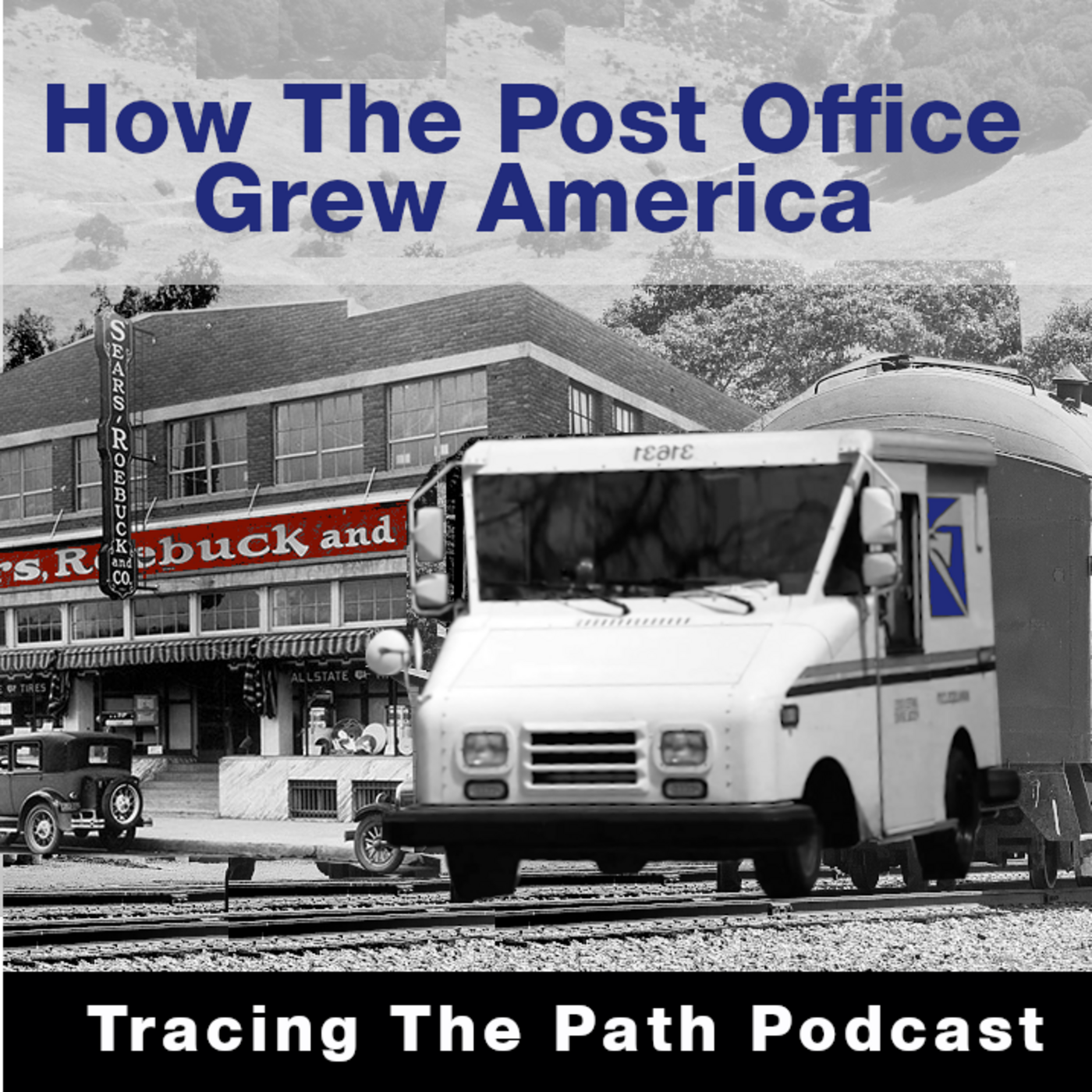 |
How the Post Office Grew America? You’ve never heard how important it was for the Post Office to Expand |
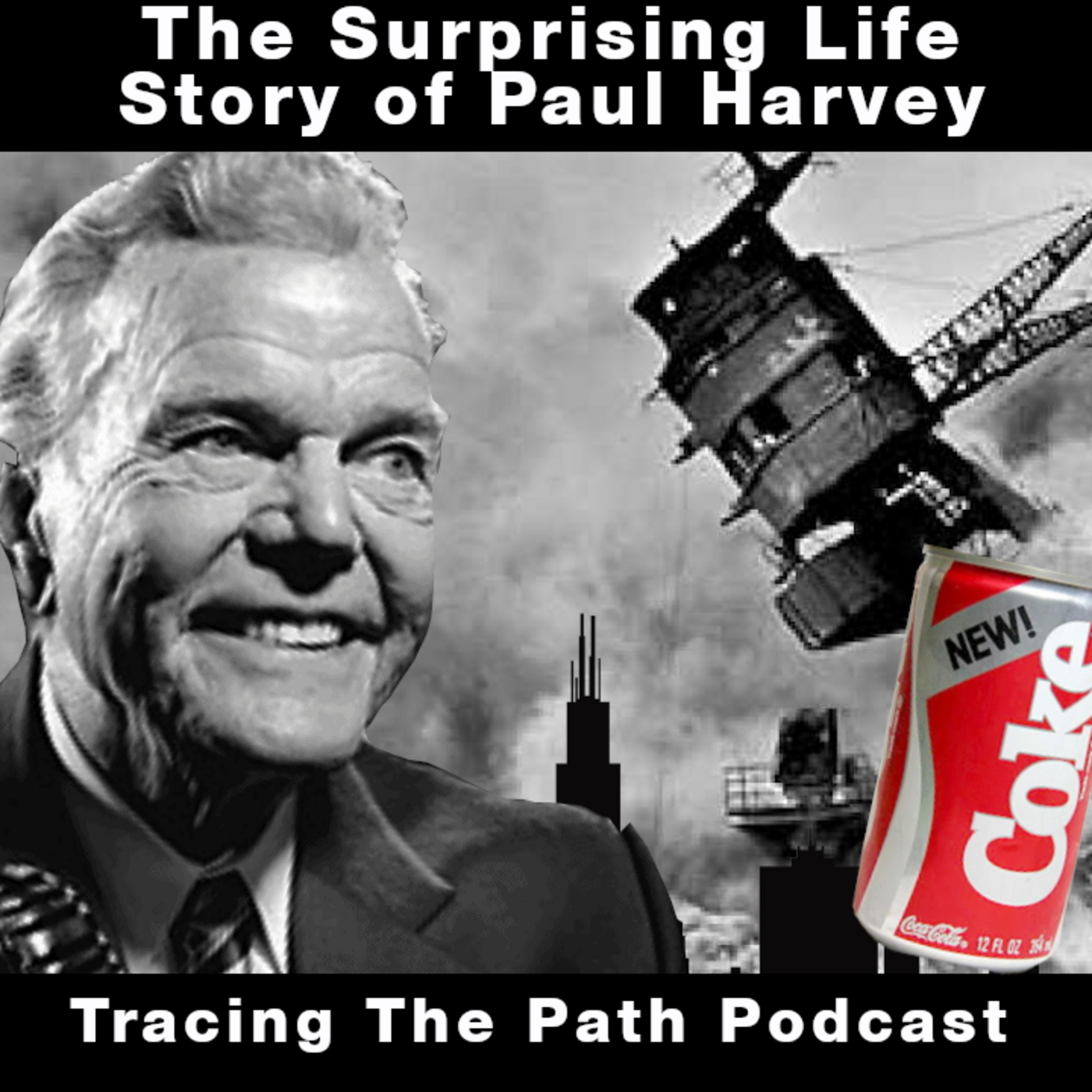 |
The Surprising Life Story of Paul Harvey Pearl Harbor, Pilot, Chicago and Coca-Cola; The World’s Most Prolific Radio Man |
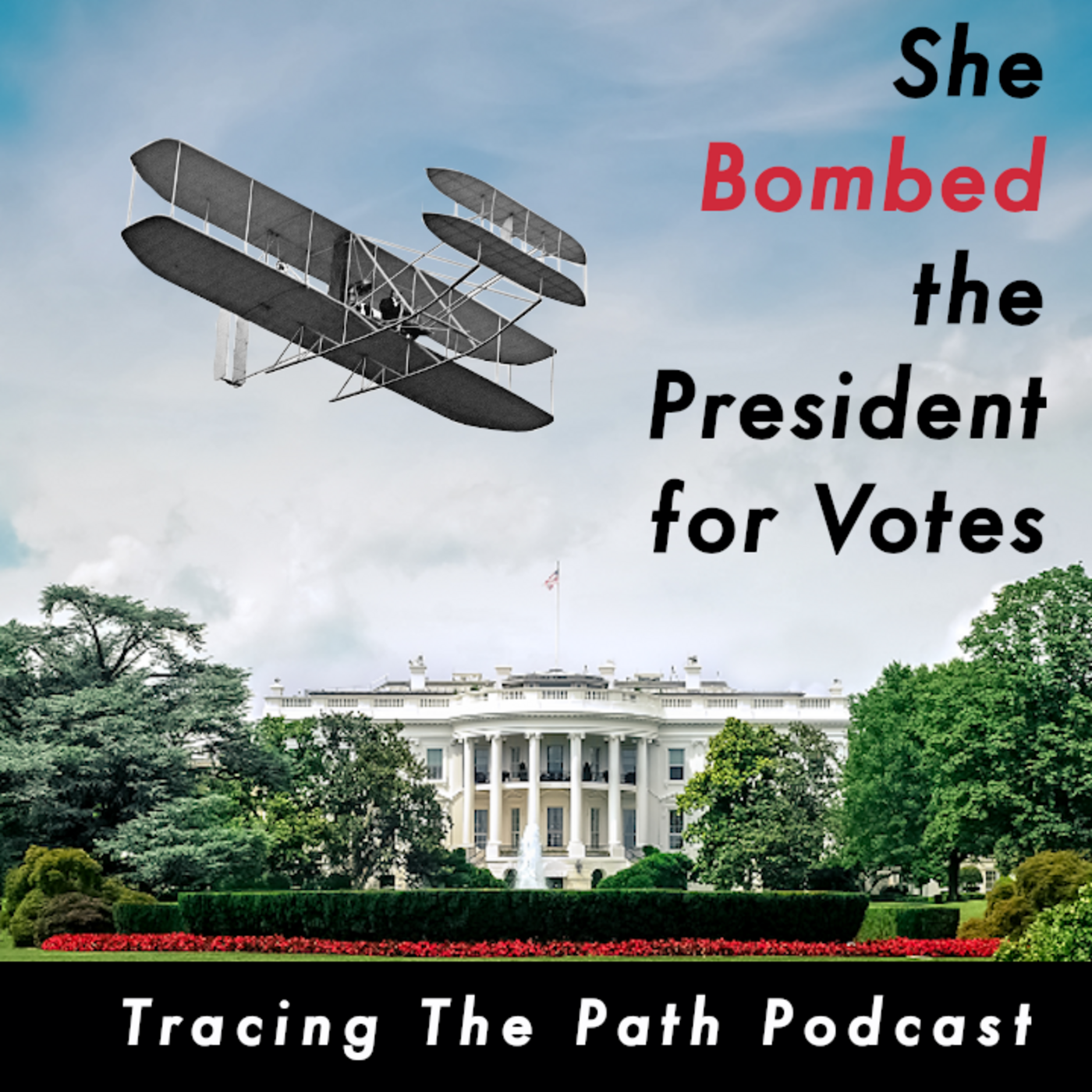 |
She Bombed the President for Votes Women, who were given freedom by the Constitution spent 200 years fighting to use it. |
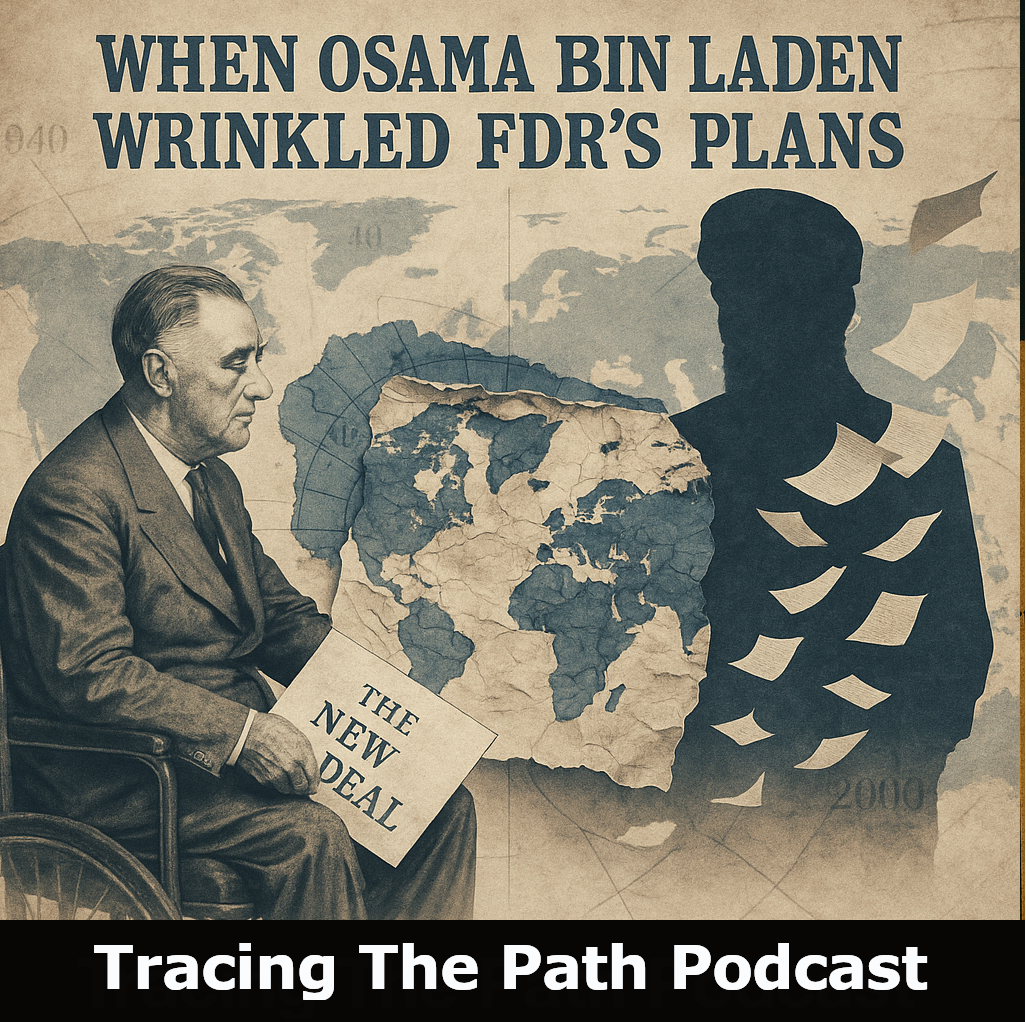 |
When Osama Bin Laden Wrecked FDR’s Plans It’s the story of Polio, The March of Dimes and Osama |
SEE THE BIBLIOGRAPHY
SUBSCRIBE AND LISTEN (FOR FREE!)
RATINGS & REVIEWS
If you enjoy this podcast, please give it a rating and review.Positive ratings and reviews help bring Tracing The Path to the attention of other history lovers who may not be aware of our show.



